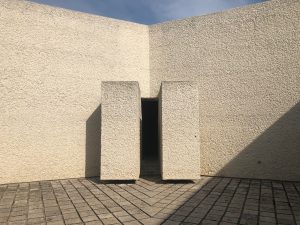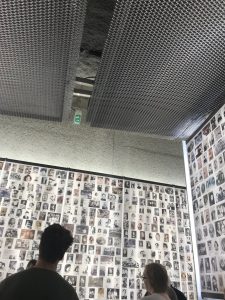Paris was a metropolis of sun-soaked buildings framing the Seine, iconic architecture emerging from the dense urban environment. Flowers were in shops on every corner, the sound of pleasant chatter and excitement in the warm evenings, and smells of bakeries lifting along the breeze. Paris seemed ideally European, almost too perfect.
Our visits to the Mémorial des Martyrs de la Déportation and the Shoah Memorial reflected the lack in continuity and acknowledgement of history. The first, sits unassumingly into the landscape behind Notre Dame, overlooking the river. It presents itself to the visitor as a massive, light-colored stone that is carved away for a one-person path down into the crypt and museum. Despite the gravity of the subject, the memorial was poor in relating to the visitor. The experience impressed on me how horrible the Jews were treated in an occupied France and utilized personal accounts and imagery to explain.
The second site was much more informative in that it walked the visitor through the exact process of deportation of a Jew in France, even providing evidence of the Vichy Government’s complacency to the Nazi regime. The memorial had names of those who had helped hide and facilitate the escape of Jews. Again, we descended to experience the exhibits and memorials to those who suffered and died. This institution showed information from all parties, trying to expose the movements of all influencers in the Holocaust. It touched everything – registration cards, Auschwitz, deportation, resistance, life after, etc.
The two institutions really exposed the gamut in information that can be curated to portray a certain perspective on a subject. The first carefully manicured its exhibit and memorial to ignore the French Government’s participation in the deportation of Jews while the second was more information based, hoping to share as much knowledge about the conditions that a deported Jew took. It is concerning that information may not be completely true, or showing a partial truth. How can we remember these events without knowing the entire picture?

